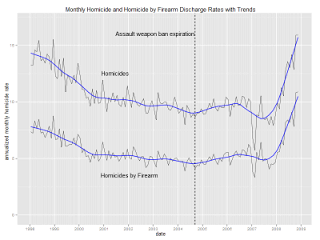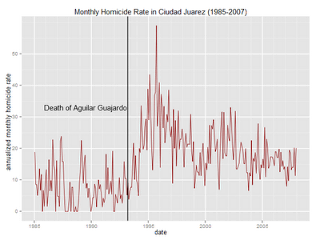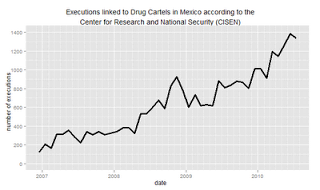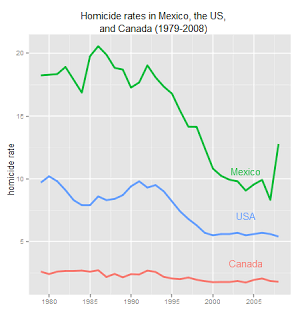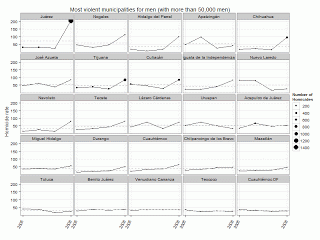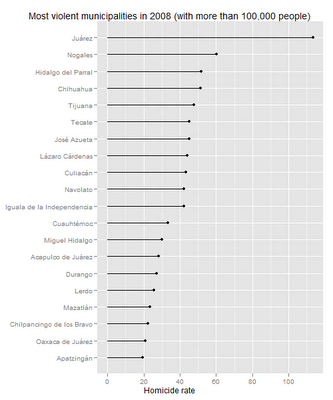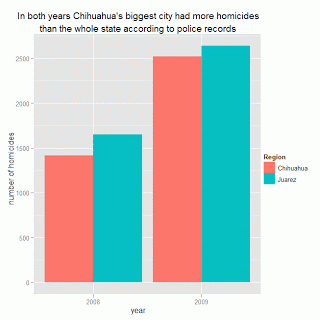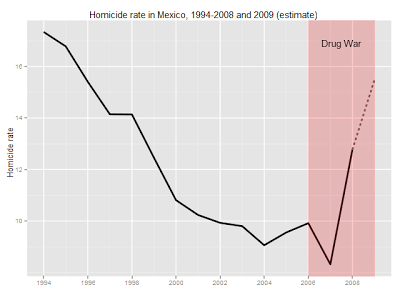- The top six most violent municipalities are near the US border. Ciudad Juárez is in a class by itself with 113 homicides per 100,000 people.
- José Azueta is the municipality where Zihuatanejo is located. Mazátlan, another popular tourist destination, also appears on the list.
- Lázaro Cárdenas is the largest ...
OpenHeatMap is an open-source tool that lets you turn a spreadsheets into a maps. It is very user-friendly if you have lots of data because it allows you to zoom into the map, and if you’re like me and can never remember the exact location of important cities, when you hover your mouse over a region it shows you its name and the exact value you assigned it.
But best of all Pete Warden just updated OpenHeatMap with maps of Mexico at the municipality level. I decided to take advantage of this and built a HeatMap/Choropleth of the murder rate in Mexico for the last three years (the drug war started December 2006).
The spreadsheet I used to build the maps looks like this:
| mex_muni_code | value | time |
| 01001 | 3.1 | 2006 |
| 01001 | 3.9 | 2007 |
| 01001 | 5.7 | 2008 |
| 01002 | 2.4 | 2006 |
| 01002 | 2.4 | 2007 |
The mex_muni_code column corresponds to the combined state and municipality codes, the value column is the homicide rate, and time is an optional column if you want the map to have a slider so you can compare homicide rates over time. Once the spreadsheet is ready all you have to do it is upload it and you’re set to go.
